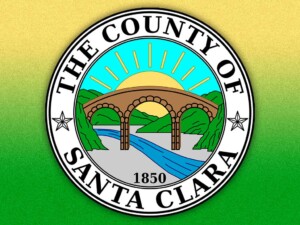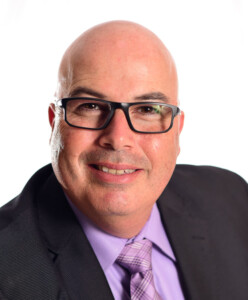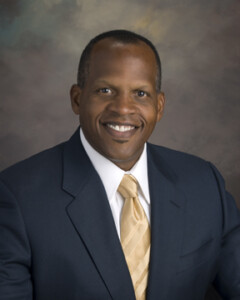Nonprofit profile: San Martin Neighborhood Alliance holds forum for District 1 Supervisor candidates
Three out of four candidates answer residents’ questions including their thoughts on high-speed rail
![]()

By Marty Cheek
The public got a chance to hear from three of the four candidates running for the Santa Clara County District 1 board supervisor seat.
The Jan. 27 Zoom-based forum was organized by the San Martin Neighborhood Alliance and lasted two hours. A recording of it can be viewed on the SMNA website at www.smna.org. The candidates running in the June 7 primary race who attended the forum were Rich Constantine, Johnny Khamis, and Claudia Rossi.
Sylvia Arenas, a San Jose city councilmember who announced in early January she intends to run, sent an email to the forum organizers one hour before the event stating she declined to attend. Gilroy Life sent her campaign an email asking for her reason for not participating and as of press time Jan. 28 her campaign had not responded.
Questions submitted by South Valley residents were asked by Margo Hinnenkamp, a member of the Morgan Hill AAUW branch. Local issues the candidates addressed included the future of the San Martin Airport, affordable housing, climate change, farming and protecting the rural environment, local crime, trash dumping, water safety, homeless encampments, health care, and the California High-Speed Rail project.
The high-speed rail project, if built, will impact Gilroy, San Martin and Morgan Hill, Hinnenkamp said in preface to the question: “Where do you stand on high-speed rail?” Here are the three candidates’ entire responses in the order the question was answered:
Claudia Rossi:

Claudia Rossi
“This is a state project. It is a state project. The community has concerns about where the high-speed rail will cross. I want to share with you that my mother who is terrified of flying makes her way to Southern California and she on the way back from Los Angeles has to sit in a train that passes Gilroy, San Martin and Morgan Hill. She goes to Diridon Station, passing the community, not being able to have a stop that would drop her off where she lives. So my answer is to recognize that high-speed rail has been approved, that I do welcome opportunities to connect us to other parts of the state, that I do see, given that it is a fait accompli, the opportunity to make sure that the construction of high-speed rail benefits our community that offers employment opportunities for our community, and so if you have lemons, make lemonade. I do think it’s a positive thing to connect us to other parts of the state and I want to see us really make sure this creates opportunities for our local working men and women to gain employment with the construction of the high-speed rail.”
Johnny Khamis:

Johnny Khamis
“What is there to say? I agree a little bit with Claudia on this one because the ship has sailed. I’ve always been against high-speed rail since they put it on the ballot and said it was only going to cost $32 billion — $122 billion later we still really don’t have anything to show for it. I can also tell you that as the head of the Economic Development Committee for the city of San Jose, this technology that we’re using is more than 50 years old. And so many rail systems around the world are much faster and safer than the one that we’re actually building now. Much like light-rail, which I don’t support expanding, it’s kind of like throwing good money after bad. At a minimum, I think we can try to advocate for safer ways to traverse through South County and I will continue to advocate for safer routes to be looked at if at all possible. Like I said: that ship has actually sailed and, unfortunately, it’s a freight ship rather than a speed boat.”
Rich Constantine:

Rich Constantine
“I tend to take a less pessimistic view on that. I don’t think the ship has already sailed and the reason why I say that is that we’re currently working with High-Speed Rail Authority to work on the different alignments that they have or are going to put in place. Back in 2008 when Proposition 1A was put on the ballot, I had visions of, you know, high-speed rails in Europe and in China and being able to go from San Francisco to L.A. in two hours and forty minutes. That was appealing and I voted for it and I’m sure like many people in this Zoom. But the devil’s in the details. If I knew all the issues that were going to come up, I would not have voted for it, I can tell you. Now I had a meeting with High-Speed Rail Authority earlier last week to talk about the EIR (environmental impact report) that is about to come out, and I brought up the question: ‘Why do we have to worry about two hours and forty minutes?’ It was mentioned in your question that it would take seven minutes (more). They’re always concerned about time. And I asked: ‘Why can’t we just extend that? Say, San Francisco to L.A. in two hours and forty minutes. Why don’t we say three hours?’ And he said: “It was voter approved.” Just yesterday, I met with  Assemblymember Robert Rivas and I talked to him about possibly legislatively changing that time because one of the reasons why the High-Speed Rail Authority said they can’t go down 101 is because it would have to slow down too slow because 101 is not straight enough for the high-speed rail. So, why don’t we work on changing that? Instead of two hours and forty minutes, let’s look at three hours. So if that’s something we can do to possibly make it more appealing and easier for some of the communities high-speed rail will go through, we need to do that. We have to constantly keep working, keep looking for solutions because it’s not done. Until the rail is actually put in the ground, we can still make sure our communities are not adversely impacted by what should be a good thing.”
Assemblymember Robert Rivas and I talked to him about possibly legislatively changing that time because one of the reasons why the High-Speed Rail Authority said they can’t go down 101 is because it would have to slow down too slow because 101 is not straight enough for the high-speed rail. So, why don’t we work on changing that? Instead of two hours and forty minutes, let’s look at three hours. So if that’s something we can do to possibly make it more appealing and easier for some of the communities high-speed rail will go through, we need to do that. We have to constantly keep working, keep looking for solutions because it’s not done. Until the rail is actually put in the ground, we can still make sure our communities are not adversely impacted by what should be a good thing.”
A forum for District 1 candidates is being organized by Leadership Morgan Hill, the American Association of University Women (Morgan Hill branch) and the city of Morgan Hill. It is planned for 5:30 p.m. and will be held at the Morgan Hill City Council Chamber, 17575 Peak Ave.

